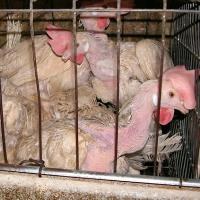(LUXEMBOURG) – EU action on animal welfare has been successful in important aspects, but weaknesses persist in relation to farm animals, according to a new report from the European Court of Auditors.
The EU livestock sector represents 45 per cent of total agricultural activity, generating an output of 168 billion annually and provides around 4 million jobs. Linked sectors (milk and meat processing, livestock feed) have an annual turnover of approximately 400 billion. The consistent application of animal welfare standards is seen as helping to level the playing field in these sectors.
Guidelines on how animals are to be transported and slaughtered and on the welfare of pigs have been issued by the Commission, but the auditors say there are still issues on how they are implemented on the ground. Member States generally act on recommendations from the European Commission, say the auditors, but can take a long time to do so.
The EU has some of the world’s highest animal welfare standards, which include rules on the rearing, transport and slaughter of farm animals. The common agricultural policy (CAP) links farm payments to minimum levels of animal welfare, while rural development policy encourages farmers to pursue higher standards. For 2014-2020, 18 Member States have allocated 1.5 billion to animal welfare payments under rural development.
To examine how the welfare of farm animals is checked and the overall implementation of the EU animal welfare strategy, the auditors visited five Member States: Germany, France, Italy, Poland and Romania. They concluded that EU action was successful in some areas, but that there were still weaknesses in compliance with minimum standards. There is room to improve coordination with cross-compliance checks, and better use could be made of the CAP to promote higher animal welfare standards.
“Animal welfare is an important issue for EU citizens,” said Janusz Wojciechowski, the Member of the European Court of Auditors responsible for the report. “The European Commission has been proactive in addressing stakeholders’ concerns, but we still need to close the gap between the ambitious goals and practical implementation.”
The Commission has used both guidance and enforcement to achieve compliance. It has been successful in important areas, notably the group housing of sows and the ban on cages that restrict laying hens. The Commission and the Member States have worked on guidelines to improve the understanding and application of legal requirements and distributed them widely. The Member States visited generally followed the Commission’s recommendations, but sometimes took a long time to address them.
Weaknesses persist in some areas, say the auditors, particularly in relation to the routine tail docking of pigs, the lack of compliance with rules on long-distance transport and the transport of unfit animals, and the use of stunning procedures at slaughter.
Member States’ official control systems are a key factor. The auditors found good practice, particularly regarding the consistency of official inspections, but also saw a need to focus on areas and business operators with a higher risk of non-compliance. Member States could make better use of the information gained from internal audits and complaints to improve their management of animal welfare policy.
Member States have generally put in place appropriate arrangements for cross-compliance checks on animal welfare, say the auditors. However, there is scope for improving coordination with official inspections. There were also cases where penalties applied by paying agencies were not proportionate to the seriousness of the irregularities.
The auditors make a number of recommendations to the European Commission aimed at improving the management of animal welfare policy. They relate to the strategic framework for animal welfare, more effective enforcement, guidelines for compliance, strengthening the links between cross-compliance and animal welfare, and action to better address animal welfare through rural development policy.



